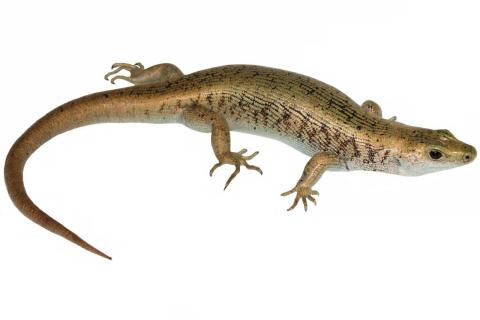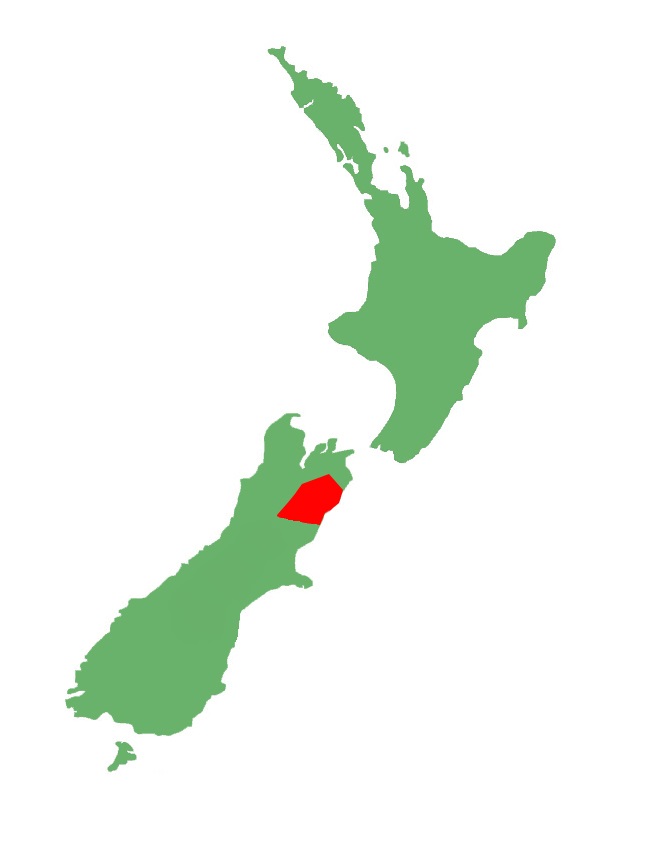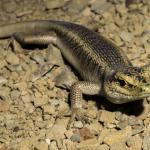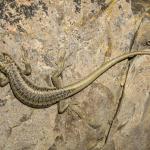- Home
- Herpetofauna Index
- Native
- Oligosoma Aff. Waimatense "Marlborough"
Oligosoma aff. waimatense "Marlborough"
Marlborough scree skink
Oligosoma aff. waimatense "Marlborough"

Length: SVL up to 120 mm, with the tail being much longer than the body length.
Weight: Up to at least 28 grams.
Description
A beautiful, undescribed species of skink that was recently recognized as a distinct taxon with a snout-vent-length (SVL) up to 120 mm. Dorsal surface typically bright golden or tan (sometimes with olive-green tint) with pronounced black transverse bands and black edging to many of the scales around the mid-dorsal area. There is sometimes a conspicuous "gap" along the dorsolateral area, where bold black bands are absent. The lateral surfaces are similar to the dorsal surface, with bold black transverse bands extending most of the way to the ventral surface. However, the basal color of the mid-lower portion of the lateral surfaces quickly transition to a pale grey color. Ventral surface and throat mostly uniform grey sometimes with a pale pink hue to the belly.
Life expectancy
Upper limit unknown. However, the oldest animals in captivity are known to be around 40 years old.
Distribution
Upper Wairau River, Chalk Range, Clarence River, Inland Kaikōura Range, and Seaward Kaikōura Range.
Ecology and habitat
Marlborough scree skinks are diurnal, saxicolous, and avidly heliothermic. They are highly active and mobile. Marlborough scree skinks occupy lowland, montane/subalpine, and alpine areas. They typically inhabit dry rocky areas with suitable refugia (their large size renders them more vulnerable to predators). These include boulderfields, screes, talus, stoney river terraces, rocky shrubland, and rocky bluffs. Marlborough scree skinks are frequently seen occupying rock tors and bluffs. In these habitats they seek refuge in deep crevices.
Social structure
Unknown.
Breeding biology
Largely unknown, however, scree skinks may breed annually or biennially. Reproductive maturity is thought to be a minimum of 4-5 years of age (Lettink and Monks, 2019).
Diet
Invertebrates, smaller lizards (possibly including conspecifics), and native fruits.
Disease
Marlborough scree skinks are a known host for the ectoparasitic mite Ophionyssus scincorum.
Conservation strategy
Marlborough sree skinks are highly vulnerable to mammalian predation, partly because of their large size. Consequently, they only exist in a few areas in lowland habitat (compared to what their former extent would likely have been), and are more common and widespread at higher altitudes. However, when considering the decline of other mainland lizard populations, including other scree skink populations, it is probable this species is declining as a whole (Lettink and Monks, 2019).
Interesting notes
Marlborough scree skinks have recently been identified as markedly divergent from scree skinks (Oligosoma waimatense). This combined with their geographical separation and morphological differences have led to them being considered a distinct taxonomic unit (Hitchmough et al., 2021).
References
van Winkel, D., Baling, M. & Hitchmough, R. (2018). Reptiles and Amphibians of New Zealand: A field guide. Auckland: Auckland University Press, 376 pp.



